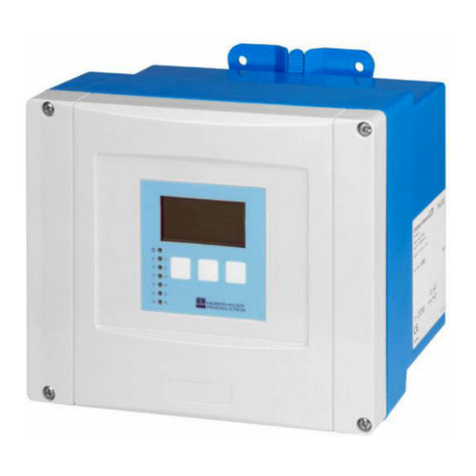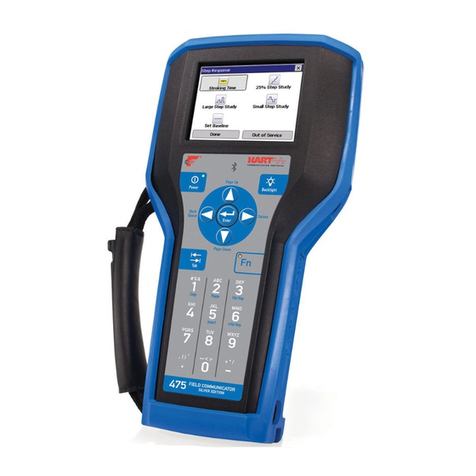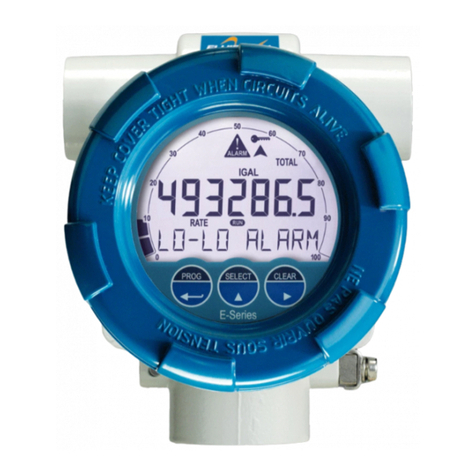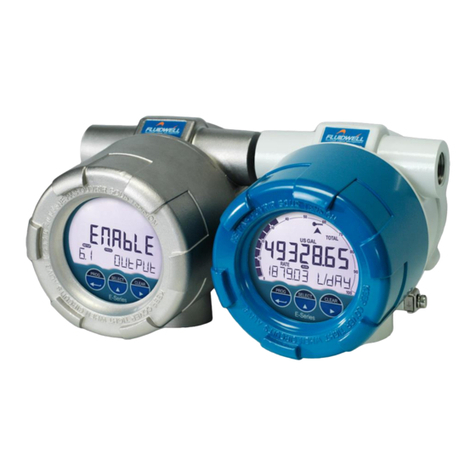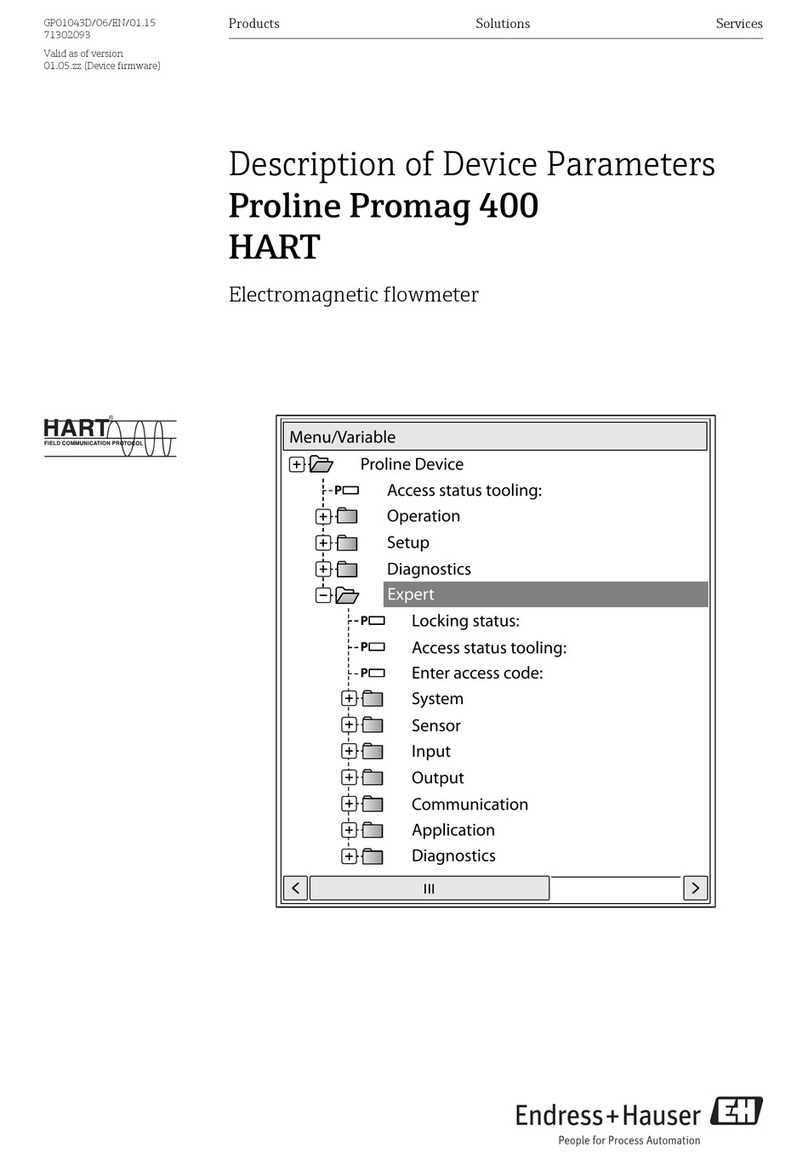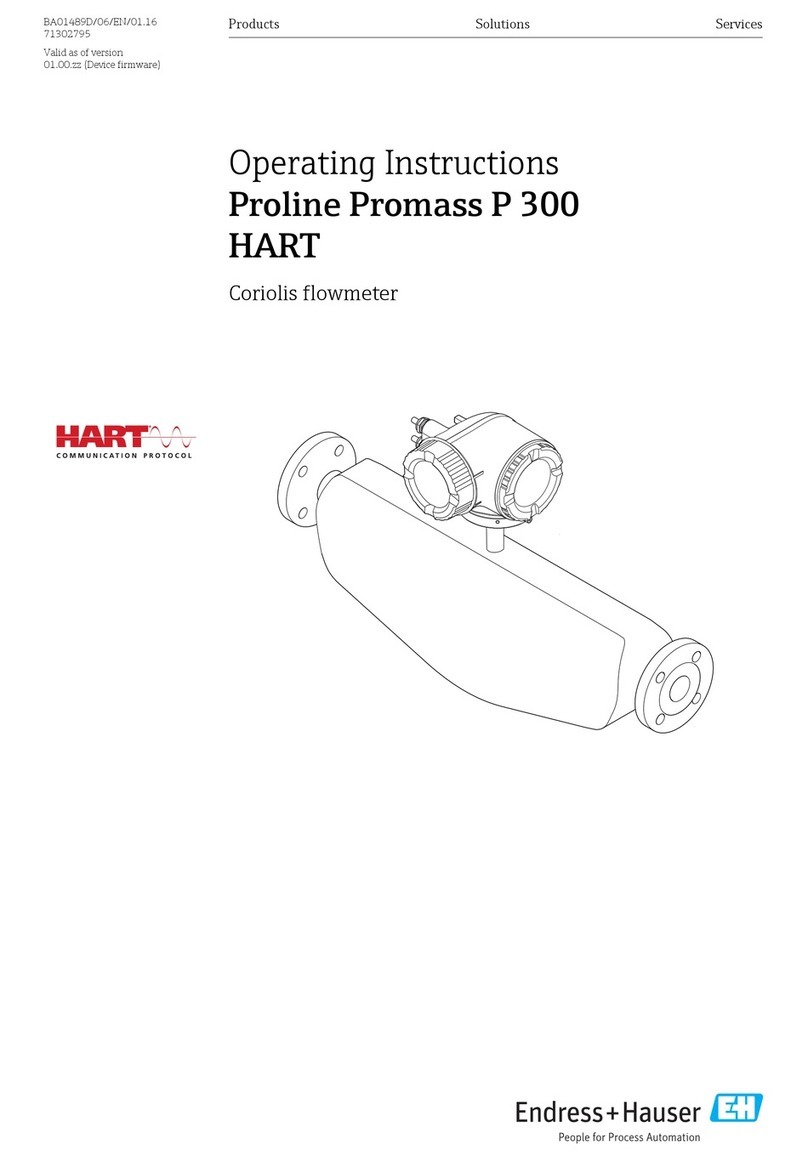
Table of contents
4 Endress+Hauser
8.3.11 Disabling write protection via access
code ......................... 56
8.3.12 Enabling and disabling the keypad
lock ......................... 56
8.4 Access to the operating menu via the Web
browser ............................. 57
8.4.1 Function range ................. 57
8.4.2 Prerequisites ................... 57
8.4.3 Establishing a connection ......... 59
8.4.4 Logging on .................... 60
8.4.5 User interface .................. 61
8.4.6 Disabling the Web server .......... 62
8.4.7 Logging out .................... 62
8.5 Access to the operating menu via the
operating tool ........................ 62
8.5.1 Connecting the operating tool ...... 63
8.5.2 Field Xpert SFX350, SFX370 ....... 65
8.5.3 FieldCare ..................... 66
8.5.4 DeviceCare .................... 67
8.5.5 AMS Device Manager ............ 67
8.5.6 SIMATIC PDM .................. 68
8.5.7 Field Communicator 475 .......... 68
9 System integration ................ 69
9.1 Overview of device description files ......... 69
9.1.1 Current version data for the device ... 69
9.1.2 Operating tools ................. 69
9.2 Measured variables via HART protocol ...... 69
9.3 Other settings ........................ 71
9.3.1 Burst mode functionality in
accordance with HART 7
Specification ................... 71
10 Commissioning .................... 74
10.1 Function check ....................... 74
10.2 Switching on the measuring device ......... 74
10.3 Setting the operating language ............ 74
10.4 Configuring the measuring device .......... 74
10.4.1 Defining the tag name ............ 76
10.4.2 Setting the system units .......... 76
10.4.3 Displaying the I/O configuration .... 78
10.4.4 Configuring the status input ....... 78
10.4.5 Configuring the current input ...... 79
10.4.6 Configuring the current output ..... 80
10.4.7 Configuring the pulse/frequency/
switch output .................. 83
10.4.8 Configuring the local display ....... 89
10.4.9 Configuring the low flow cut off ..... 91
10.4.10 Configuring empty pipe detection ... 92
10.4.11 Configuring the HART input ....... 92
10.4.12 Configuring the relay output ....... 94
10.4.13 Configuring the double pulse output .. 96
10.5 Advanced settings ..................... 98
10.5.1 Carrying out a sensor adjustment .... 99
10.5.2 Configuring the totalizer .......... 99
10.5.3 Carrying out additional display
configurations ................. 101
10.5.4 Performing electrode cleaning ..... 104
10.5.5 WLAN configuration ............ 105
10.5.6 Configuration management ....... 106
10.5.7 Using parameters for device
administration ................ 107
10.6 Simulation .......................... 109
10.7 Protecting settings from unauthorized
access ............................. 112
10.7.1 Write protection via access code ... 112
10.7.2 Write protection via write protection
switch ....................... 113
11 Operation ....................... 115
11.1 Reading the device locking status ......... 115
11.2 Adjusting the operating language ......... 115
11.3 Configuring the display ................ 115
11.4 Reading measured values ............... 115
11.4.1 Process variables ............... 115
11.4.2 "Totalizer" submenu ............. 117
11.4.3 "Input values" submenu .......... 117
11.4.4 Output values ................. 118
11.5 Adapting the measuring device to the process
conditions .......................... 121
11.6 Performing a totalizer reset ............. 121
11.6.1 Function scope of the "Control
Totalizer" parameter ............ 122
11.6.2 Function scope of the "Reset all
totalizers" parameter ............ 122
11.7 Showing data logging ................. 122
12 Diagnostics and troubleshooting .. 125
12.1 General troubleshooting ................ 125
12.2 Diagnostic information via light emitting
diodes ............................. 127
12.2.1 Transmitter ................... 127
12.3 Diagnostic information on local display ..... 129
12.3.1 Diagnostic message ............. 129
12.3.2 Calling up remedial measures ..... 131
12.4 Diagnostic information in the Web browser .131
12.4.1 Diagnostic options .............. 131
12.4.2 Calling up remedy information .... 132
12.5 Diagnostic information in DeviceCare or
FieldCare ........................... 133
12.5.1 Diagnostic options .............. 133
12.5.2 Calling up remedy information .... 134
12.6 Adapting the diagnostic information ...... 134
12.6.1 Adapting the diagnostic behavior ... 134
12.6.2 Adapting the status signal ........ 134
12.7 Overview of diagnostic information ....... 135
12.8 Pending diagnostic events .............. 139
12.9 Diagnostic list ....................... 140
12.10 Event logbook ....................... 140
12.10.1 Event history .................. 140
12.10.2 Filtering the event logbook ....... 141
12.10.3 Overview of information events .... 141
12.11 Resetting the measuring device .......... 143
12.11.1 Function scope of the "Device reset"
parameter .................... 143
12.12 Device information ................... 143













